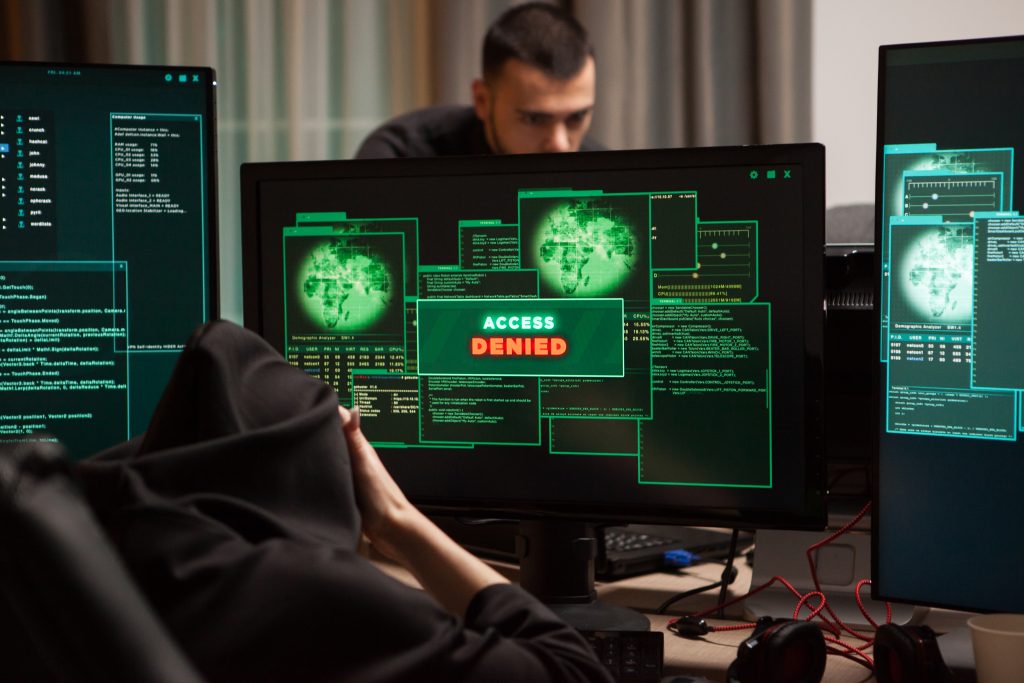
Introduction about Protecting Data: The Importance of Building Secure Software
As the wave of cyber-attacks rise, the need to protect your data and systems during software development has become essential, extending beyond the development phase.
- Business owners, app developers, software engineers: Securing software from intrusions is crucial.
- A deep dive into security strategies pre and post software development.
- Pre-development measures: Early-stage threat assessments, secure coding practices.
- Post-development measures: Automated security testing, regular audits.
- Investing time in comprehensive security fosters innovation and robustness in software development.
- The path towards secure software: Security is paramount and overlooking it could be dire.
Secure Software: Overview & Importance
- Secures sensitive data against evolving cyber threats.
- Reduces risk of data breaches and identity theft.
- Adds a protective layer guaranteeing safety against a widening threat spectrum.

Increased Cyber Threats
- Rise in state-sponsored cyberattacks and phishing scams.
- Some attacks hijack devices for ransom, others exfiltrate data secretly.
- Secure software construction acts as a key fortification against such threats.\
Vulnerability Landscape
- Systems without secure software principles often fall victim to severe data breaches.
- Makes businesses an easy target for cybercriminals.
- Understanding threats and a methodical approach can help stand against these threats.
Part I: Secure Pre-Software Development
This section reviews the strategies to secure our systems and data in the lifecycle’s early stages. A critical process that enables us to lay down a sound foundation for our software’s security.
1.1. Threat Assessment and Risk Analysis
Let’s dig into the initial stages of building secure software:
- Threat Identification: This is a predictive process that pinpoints potential areas of software exploitation – akin to understanding an enemy’s battle plan!
- Risk Analysis: Here, we consider the consequences of data breaches and compute the chances of such events happening. It’s about envisioning scenarios and understanding how they might impact our systems.
- Threat Modeling: Drawing from Threat Identification and Risk Analysis, this model predicts potential security threats just as a weather forecaster predicts storms. It guides us in implementing necessary protections. Check out this source for more insights.
Just like a compass in the digital ocean, the combination of these tools doesn’t define our journey but gives us the wisdom to avoid cyber threats. With these in our arsenal, we can design secure and resilient software from the ground up.
Remember, staying one step ahead is crucial in the ever-evolving tech world. So, stay informed and create software that’s as secure as it is useful.

1.2. Security Requirements Elicitation
In the realm of software development, proactive measures are crucial, especially when it pertains to security requirements elicitation.
But what is it exactly? Let’s break it down:
- Definition: The process of collating expectations and standards designed to bolster a software system’s security, with a clear focus on potential risks.
- Timing: These requirements should be outlined early in the development process, ideally at the inception stage. A step as such aids in risk mitigation.
- Approach: You’ve many techniques at your disposal to define your security needs. A tried-and-true approach revolves around the CIA (Confidentiality, Integrity, and Availability) triad:
- Confidentiality: Guarding sensitive information against unauthorized access.
- Integrity: Ensuring data consistency and accuracy.
- Availability: Making sure systems and data are consistently accessible to authorized users.

Identification of specific security requirements comes next, along with strategy formulation for their achievement.Involvement of stakeholders is key. Crafting executable requirements that don’t hamper software usability necessitates their consent, opinions, and validation.
In sum, a well-structured and proactive approach can provide you with a greater hold on the software development process, enabling you to effectively manage security risks.
1.3. Secure Design Principles
To have a robust and reliable system capable of standing up to potential cyber threats, it is important to implement these secure design principles:
- Least Privilege: There is restricted access to only necessary information and resources for each system module.
- Defense in Depth: Security is ensured with multiple controls and measures, stopping the assumption that one security measure is sufficient.
- Fail-Securely Principle: The system is designed to prevent unauthorised access or damage during error state or system failure.
1.4. Secure Coding Practices
Let’s focus on Secure Coding Practices and see how we can guarantee the security of our codes.
Here are the key points:
- Secure coding practices involve taking safety precautions at the codebase level.
- Programming languages have specific weak spots that can be exploited, hence, industry-specific guidelines are developed to combat these threats.
- The aim is to craft a software that is impervious to attacks and can handle unexpected inputs.
- Tools like Source Code Analysis Tools are used to review each code line, identify and highlight possible threats.
- Supplementary supports like peer code reviews and coding standard tools aid in enhancing the security and reliability of the software.
- A consistent approach to secure coding practices is vital for any software development process.
Up next, we delve into Security Training and Awareness. Don’t miss it!

1.5. Security Training and Awareness
To ensure the security of software, training and awareness are key. Here’s how you can implement them:
Security Training:
- Routine training program that follows industry best practices
- Trainings tailored to each team member’s role, highlighting potential security risks specific to their tasks
- Regular updates in training materials to cater to the evolving security landscape
Security Awareness:
- Create an environment that encourages security mindfulness
- Empower developers to stay updated on emerging threats and industry advancements
- Encourage team member interaction on latest security news and its potential impact on the organization
Remember, security is a people issue. Cultivating a culture of continuous learning and vigilance reduces risks and minimizes potential breaches. The result is software that is truly secure.
Part II: Post-Development Security Measures
In the endless challenge of guarding your software post-development, the focus lies in tangible commitment and sustained vigilance. This often-underplayed yet pivotal phase employs key procedures and checkpoints. The aim is quite clear; to perpetually secure your data and systems against an ever-evolving breed of digital risks.
- Post-development: The subsequent phase post software creation requires consistent attention toward security. Its importance is commonly overlooked in favor of pre-development considerations, but it plays a vital role in the software lifespan.
- Importance: It’s integral to maintaining the security measures put in place during the developmental stage to combat advanced digital threats.
- Commitment: How you deal with these ongoing concerns of security truly reflects your long-term commitment.
2.1. Automated Security Testing
Automated security testing plays a critical role in enhancing software security by:
- Efficiently identifying vulnerabilities: Automated tools are free from human error and offer meticulous scrutiny of your software, detecting security flaws, coding mistakes, and loopholes.
- Large-scale data analysis and pattern recognition: These features increase the scope of testing and enhance results accuracy, ultimately strengthening your software’s defense.
- Repeatability: Testing can be run repeatedly without extra resource allocation, ensuring the software’s security remains contemporary.
It’s important to note that automated testing is a complement, not a replacement, for manual testing. The human element is still required to discern unseen threats and make informed decisions about risk management. Further, the results from the automated tests need to be audited and analyzed for their relevance to the project and for planning appropriate defenses.

2.2. Continuous Monitoring and Incident Response
Continuous Monitoring: Stay Vigilant and Proactive
- Continuous monitoring is akin to regularly checking the security of your house.
- It uses automated tools to observe software activity and identify incidents in real-time.
- The comprehensive approach involves monitoring system components, system patches, updates, and configuration changes.
What should continuous monitoring look like?
- It should cover all aspects – infrastructure, software applications, data, and users.
- Continuous evaluation of system patches, updates, and configuration changes is just as crucial.
Incident Response: React Swiftly and Effectively
No system is immune to threats, thus, a robust incident response strategy is crucial.
Assembling an Incident Response Team
- Create an incident response team with cross-functional skills for threat identification, containment, data recovery, and system repair.

Developing the Incident Response Plan
- The plan should guide the team from threat identification to evaluation and learning after the incident.
- Being prepared with a dynamic incident response plan helps detect threats early, counteract them swiftly, and minimize their impact.
In summary: stay alert, vigilant, and prepared to ensure the safety of your data and systems.
2.3. Secure Deployment and Configuration Management
Deploying in a Secure Environment
- Use tested, regularly updated servers, hardened against vulnerabilities
- Disable all unnecessary services.
Maintaining Configuration Management
- Consistent configuration ensures system stability and security.
- Constant review and modification of system configurations are necessary.
- Invest in automated tools that scan for configuration discrepancies and apply patches automatically.
Auditing Your System Regularly
- Perform regular audits to assess security measures.
- Identify thwarted and slipped-through threats to refine strategy.
Insist On User Education and Access Management
- Regularly hold training sessions on security protocols.
- Manage user access carefully to restrict user access to sensitive system parts.
- Implement stringent password policies.

2.4. Regular Security Audits and Assessments
Security audits and assessments play a pivotal role in maintaining the security of our data and systems during and after software development. The key aspects to consider are:
Consistency in Auditing:
- Regular audits help us keep pace with ever-evolving threats.
- Audits offer insights into vulnerabilities in our software systems, enabling proactive action.
- Think of system audits as preventative maintenance for software systems.
Effectiveness of Assessments:
- Assessments gauge the effectiveness of existing security systems.
- Any ineffectiveness uncovered should lead to prompt action.
Transforming Insights into Actions:
- Insights from audits and assessments need to be reviewed, considered, and actioned for effective security management.
In summary, regularity and effectiveness of audits and assessments, combined with appropriate actions, ensure the security of our data and systems in today’s digital landscape.
2.5. User Education and Access Management
Importance of User Education in Cybersecurity
User education is an essential line of defense against digital threats like phishing attempts and ransomware attacks.

Conduct Regular Cybersecurity Trainings
Conduct regular cybersecurity training to equip users with skills and knowledge on password hygiene, phishing recognition, and company security protocols.
The Role of Access Management
Access management controls access to data, ensuring only authorized users can view sensitive information via user authentication, role-based access controls, and multi-factor authentication approaches.
Access Management Best Practices
Limit access to only what’s needed for employees to perform their duties, and deploy multi-factor authentication for added security. Remember the principle of “least privilege” to reduce the risk of data compromise.
Conclusion: The Path Towards Secure Software
Living in a time of remarkable technological innovation, we’re endowed with an increasing array of tools and resources for system data protection. Still, security can’t be ensured just by these tools alone. A truly secure software development ecosystem incorporates protective measures at every stage.
Highlights include:
- Nurturing a security culture: This can drastically diminish vulnerabilities and empower development teams to handle emerging security threats.
- Layering security safeguards: Each action taken adds an extra security layer, impeding unauthorized access and data theft.
- Maintaining best practices in data access management: This is crucial, alongsiopde regular audits and continual education.
- Staying proactive: Aims at foreseeing security incidents before they materialize, hampering their potential effects.
Keep in mind that security is a continuous cycle, not just a one-off procedure.
As software development and cybersecurity fields progress rapidly, threats and defenses evolve tandem incorporating By in. robust security practices into your software development life cycle, you can assure the safety of your data and clients, and protect your reputation not only in the present but also in the future. Stay informed, remain vigilant, and keep your software secure.
FAQs for this Article
A threat assessment analyzes potential threats and the possible damage they could cause. In pre-software development, this becomes important as it allows teams to prepare and strategize for possible future attacks.
Secure design principles serve as the guidelines for constructing software in a manner resistant to the exploitation of security vulnerabilities. They ensure the software doesn’t provide an easy pathway for attackers.
Continuous monitoring allows teams to identify, respond, and adapt to new security threats promptly. It enforces security compliance and prompts necessary actions when an anomaly is detected.
Education allows users to understand and identify potential security threats, making them an efficient first line of defense in cybersecurity. Training can reduce the risk of human error, which is often the doorway for many security breaches.
Access management tools control and monitor user accesses to protect sensitive information and critical systems from unauthorized use. They also help in identifying malicious activities swiftly.
References and Resources
Below are the references and resources that contributed to the content of this article:


